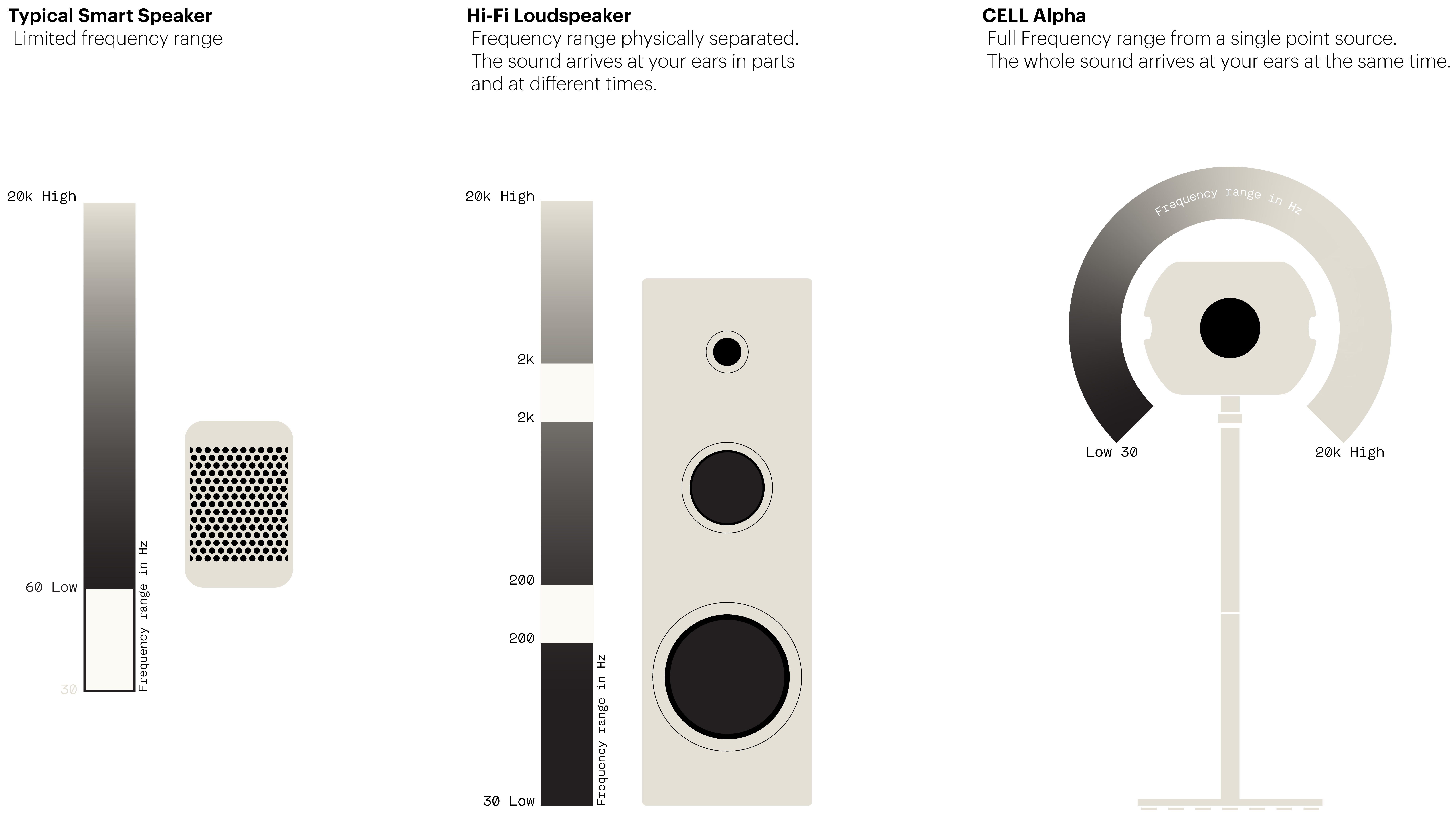About Single Point Source design
When you hear a sound in nature, it seems to come from one cohesive point, and all of its frequencies reach you at the same time. This might not seem so special. It's the way we're used to hearing sound in the real world.
However, seeking this kind of realism and detail when listening at home tends to expose the limits of traditional audio systems.

Speaker drivers are limited to a certain range of audio frequencies. Smart speakers often use a single driver or type of driver, which can aid cohesion but limits frequency response.
For full-range sound, speakers must combine drivers of multiple sizes and types. Each of these drivers has a distinct output pattern. Bass drivers tend to send sound in all directions, while midrange and treble drivers tend to cover a much smaller area.
This means unless you're sitting in the "sweet spot" where all drivers are at their best, frequency content is skewed and fidelity suffers.
The Syng difference
Cell Alpha's goal is to reproduce sounds like you hear them in the real world: Emerging from a distinct source, all frequencies arriving intact and aligned, wherever you happen to be.

To accomplish this, the custom drivers inside Cell Alpha are densely packed in a spherical array. The subwoofers face up and down. The midrange and treble drivers are horn-loaded in three concentric pairs around the equator. All speaker voice coils are drawn together in the center of the sphere.
Due to this, the full range of sound emanates in equal balance from the core. A Single Point Source.